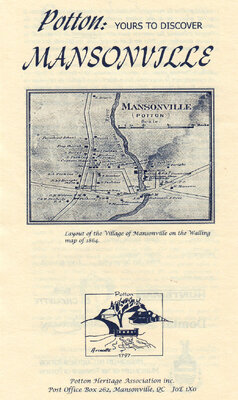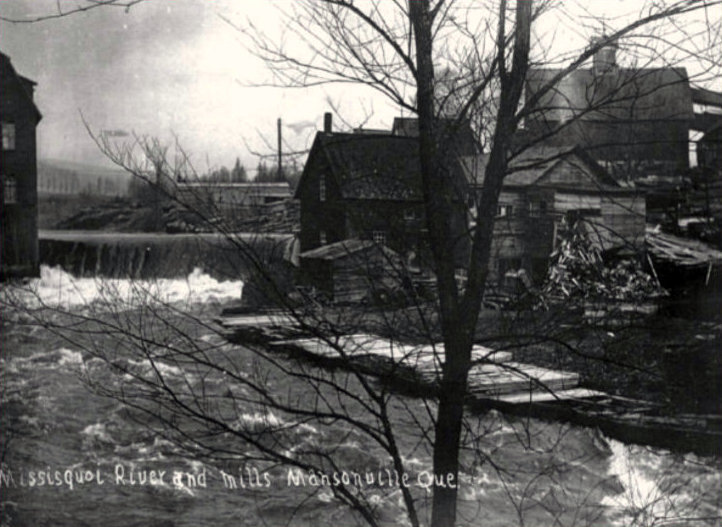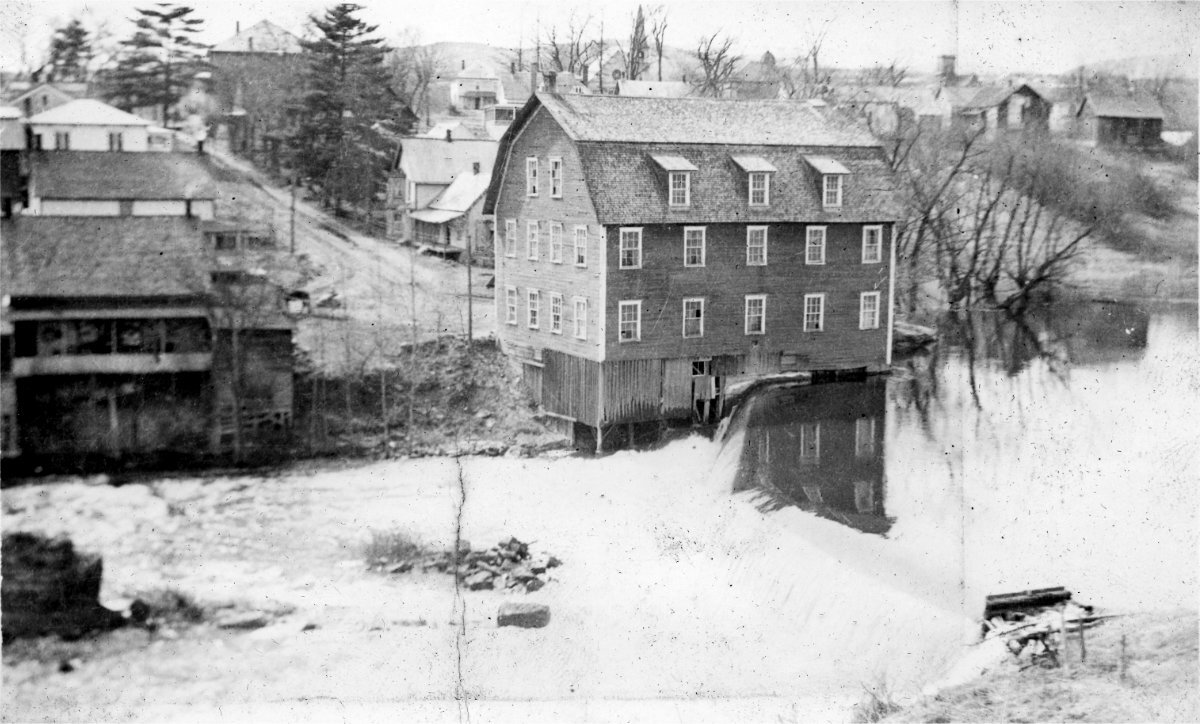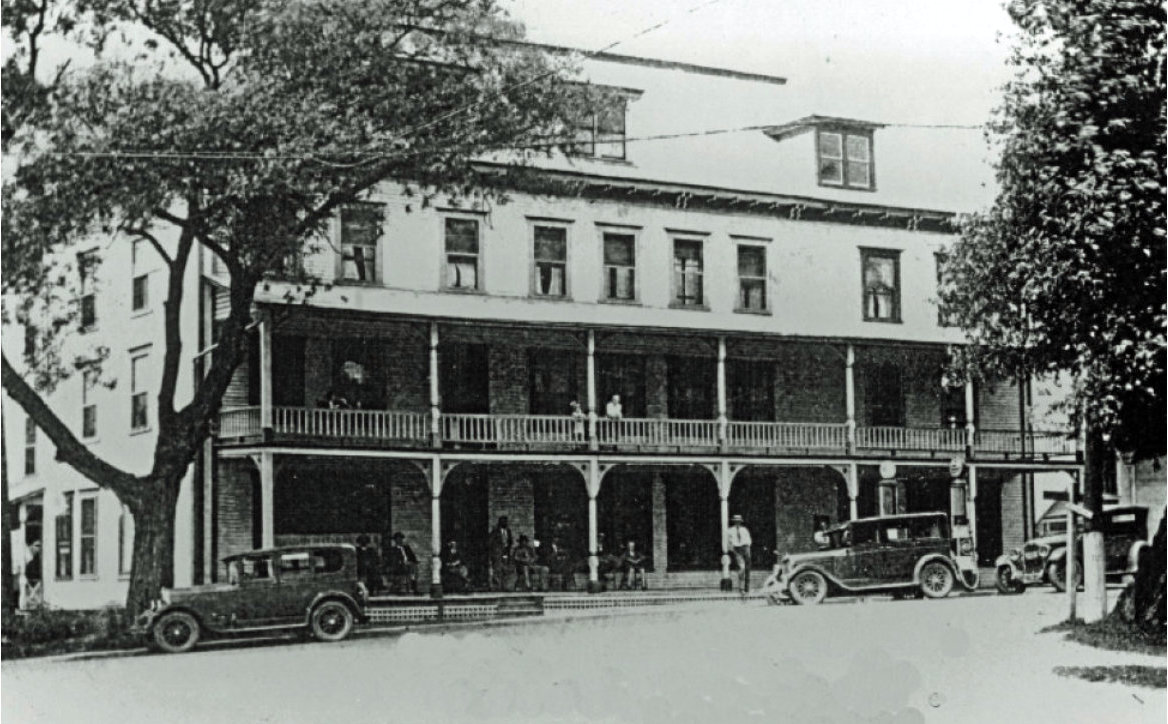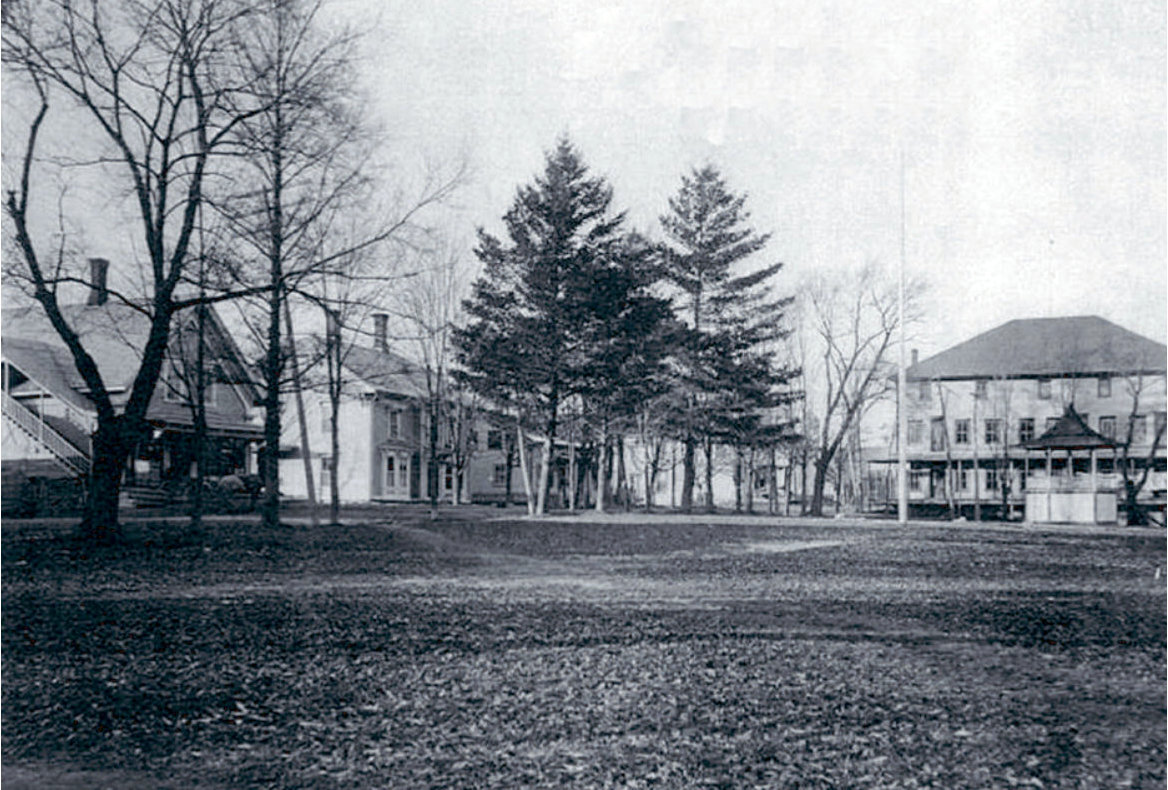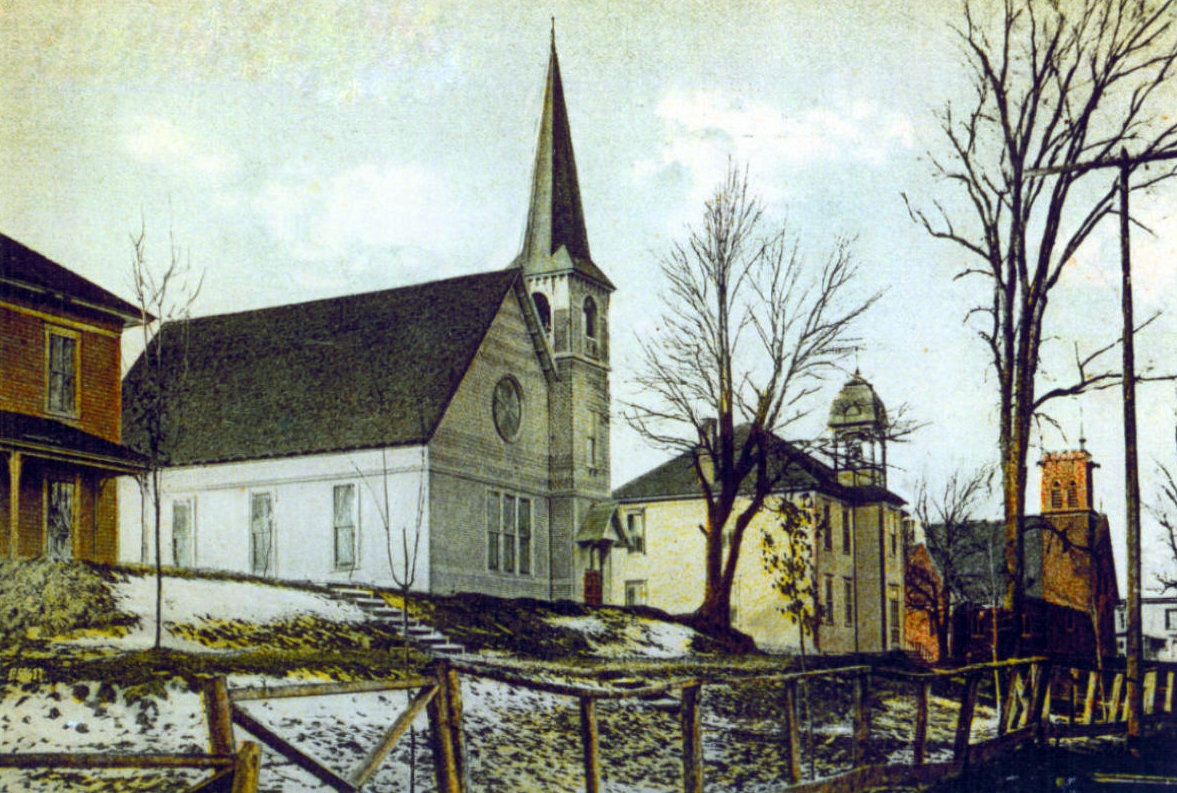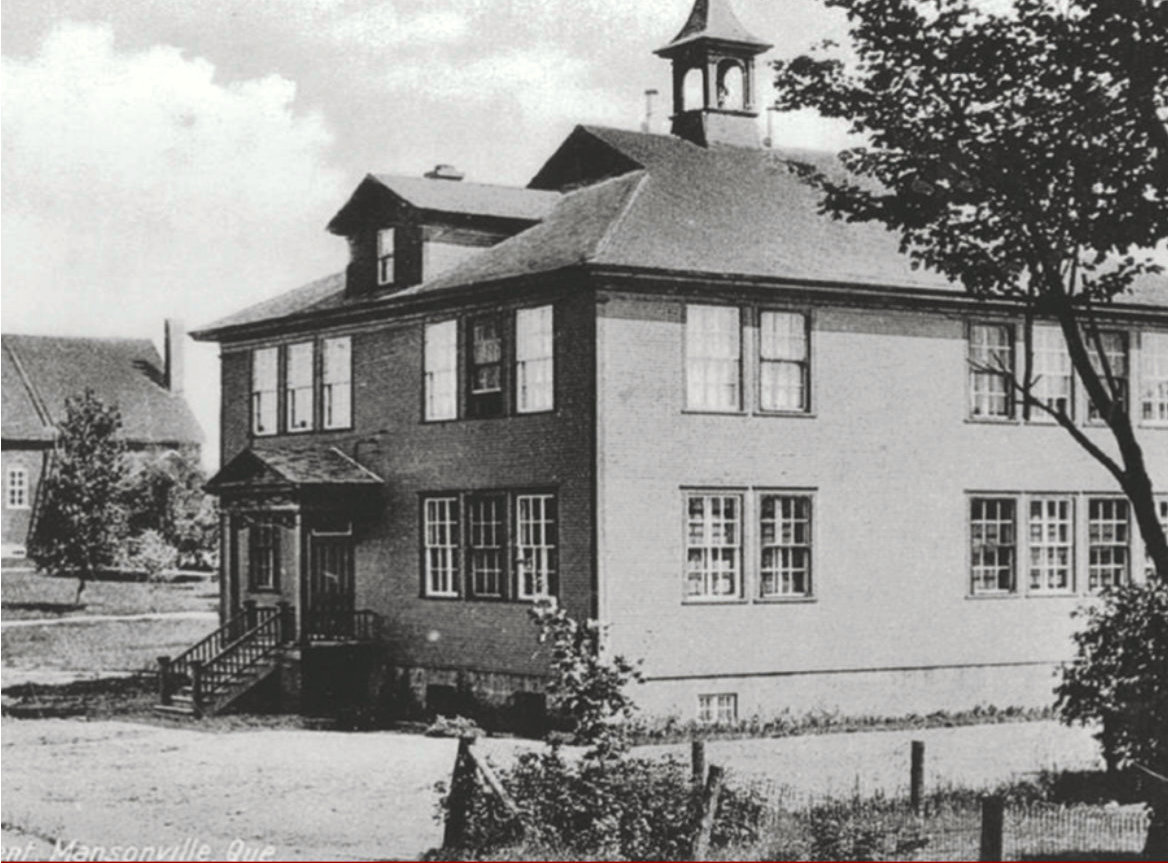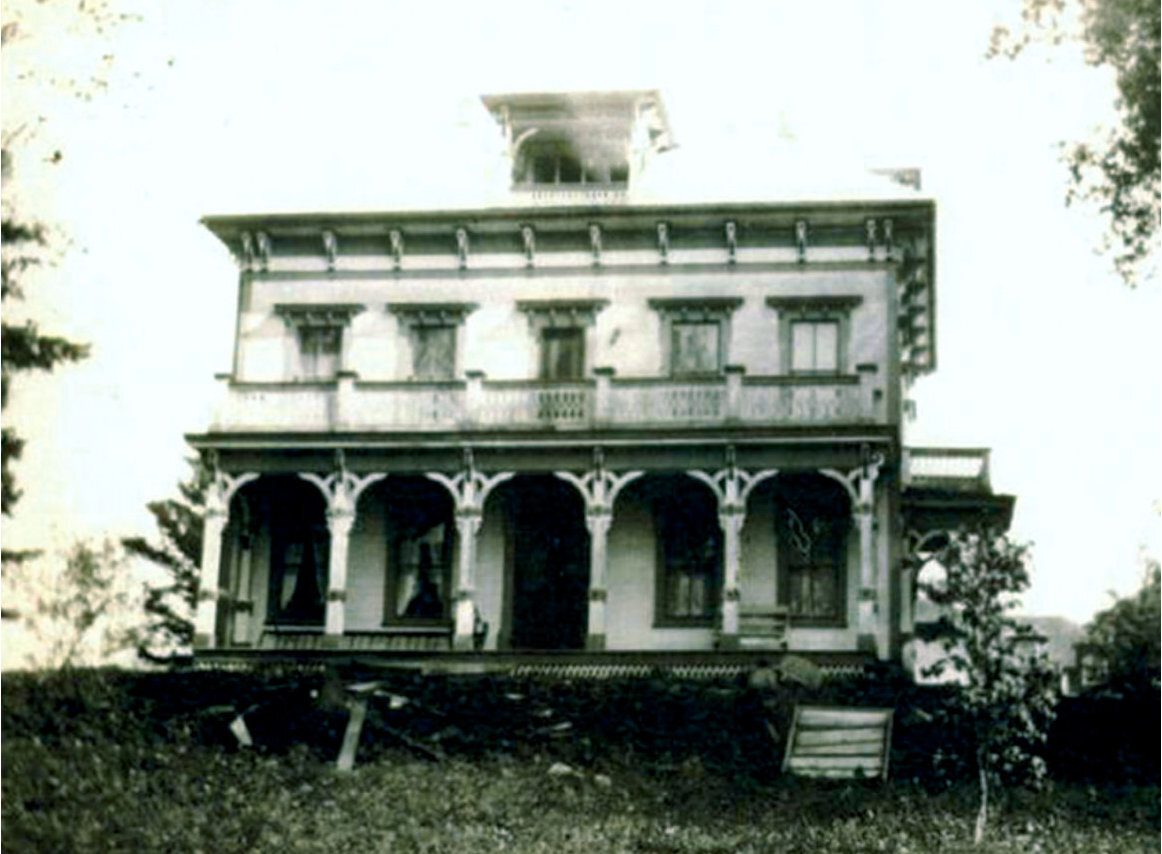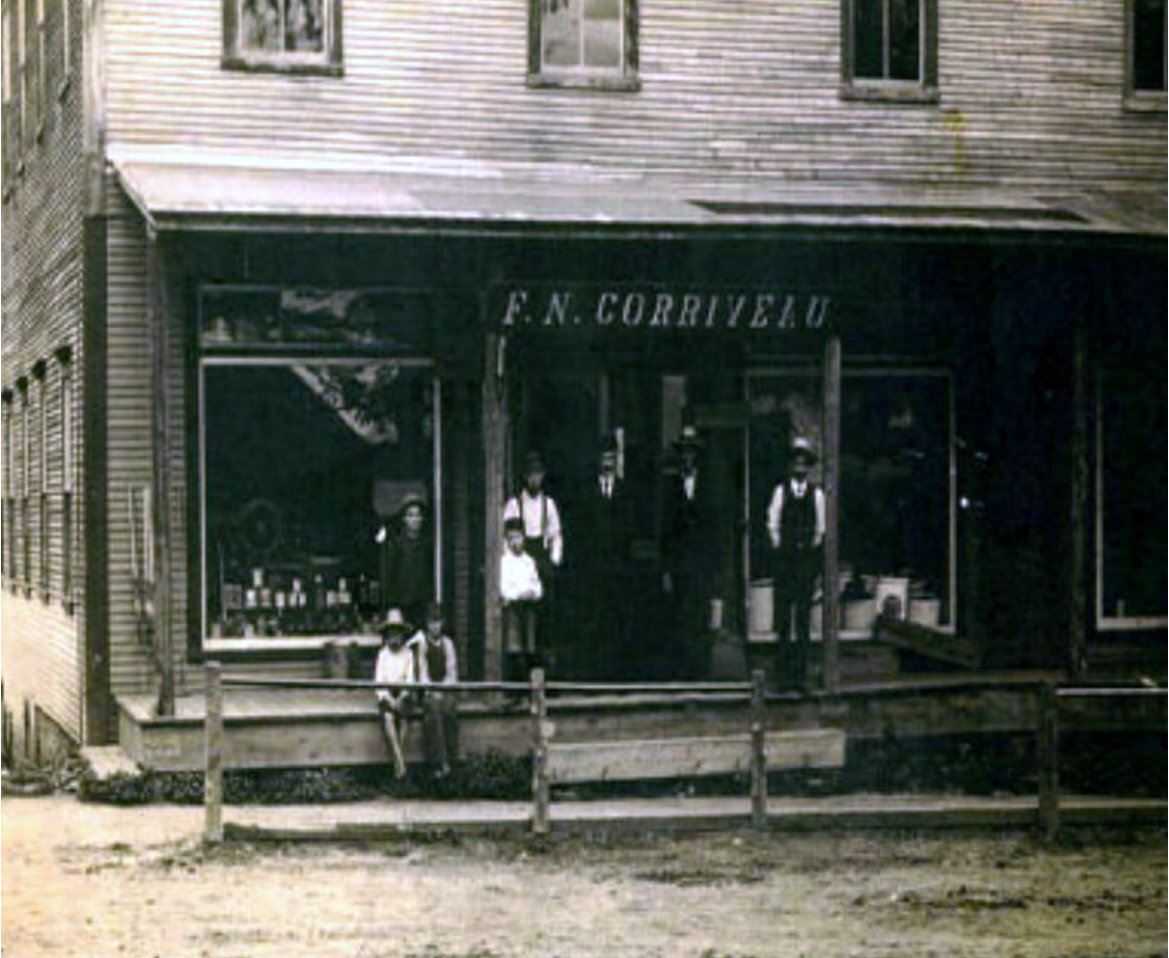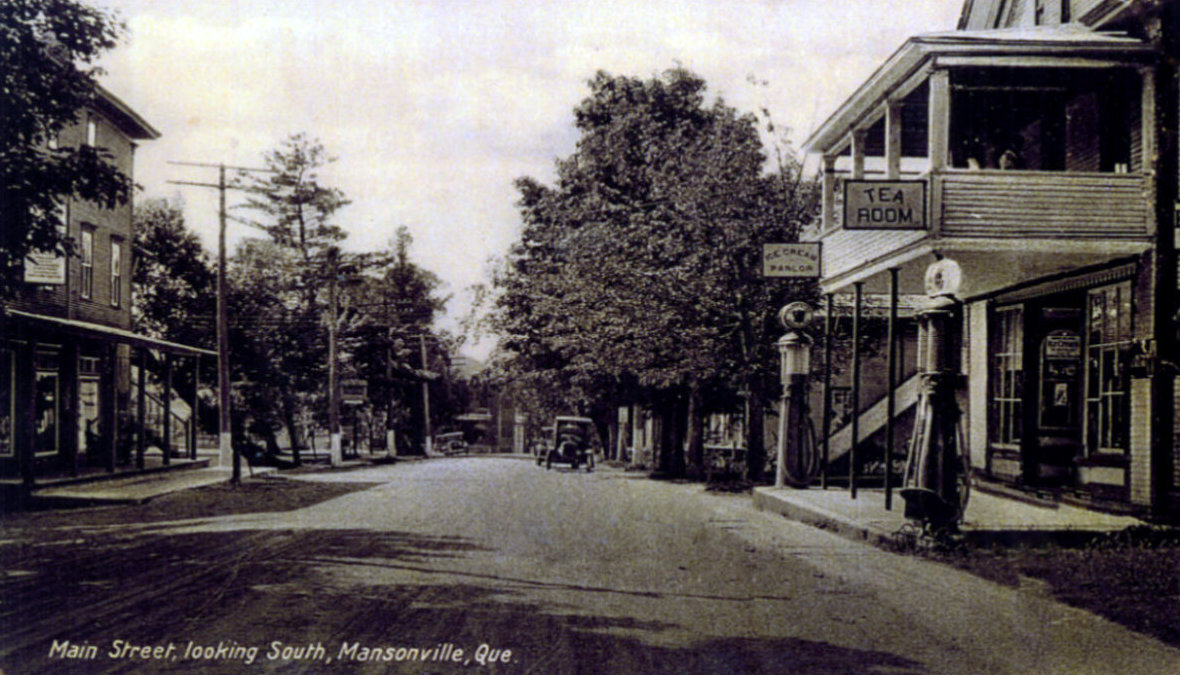The online version of this leaflet, published in 2003, has been enriched with new photos taken from the Association's archives.
Mansonville
Settlement of Potton Township began around 1792, but Mansonville started in 1803 when Joseph Chandler and John Lewis purchased a lot in Mansonville and began the construction of a sawmill which was located at the bottom of Mill Street. This colonial settlement in Potton Township appears on a military map of 1839 by Col. Charles Gore, by the name of Manson Bridge.
The name of Mansonville appeared on a regional map in 1845 as Potton Corner-Mansonville.
In 1811, Robert Manson, a Loyalist, after whom the Town is named, purchased Chandler’s mill, built a grist mill
and, by 1864, there were five mills operating on the river.
In 1824, William Manson, Robert’s brother, opened a store which also housed a tavern. By 1836, Christopher Armstrong had opened a hotel which offered ʺentertainment for man and beastˮ.
James Manson bought it in 1866 calling it Manson’s Hotel. Later, il became known as the Mansonville Hotel and, on being enlarged, was eventually owned by the Heath family from 1918 to 1958.
This hotel became quite a ʺhive of activityˮ, before being levelled after a fire in 1983.
Another landmark in the heart of the village is Place Manson, a green space given to the Town by William Manson around 1850.
Mansonville was incorporated as the ʺMunicipality of the Township of Pottonˮ in 1855.
James Manson started a General Store in 1824, then built the Town Block in 1834 at the site of today’s Town Hall. The building housed a branch of the Eastern Township Bank (CIBC today) established in 1904, the Town offices, a Custom House and a hair dresser. It burned down in 1910.
Electricity first appeared in Mansonville on December 24, 1903, thanks to Charles Brouillette’s hydro electric plant on the river located between the old mill and the bridge. A catastrophic flood on November 3 and 4, 1927 destroyed the installation and the Town was deprived of electricity for several months.
With the extension of the Orford Mountain Railway in 1906, from Potton Springs to North Troy Vt., a station was built on Bellevue Road. Later, the Canadian Pacific Railway acquired the line, operating it until 1936 when it was discontinued.
Over the years, several churches were built in the village beginning with the Baptists in 1847, the Anglicans in 1856, the Methodists in 1879 later becoming the United Church and, then, the Catholic Church in 1880. The firs English school opened in 1807. Others followed in 1825, 1857 and the Model School in 1893 at the site of the War Memorial.
The First French school started around 1880 and stood where the Canadian Legion and the medical clinic (CLSC) are located today. This building, dating from 1922, was a Convent where the nuns, the Filles de la Charité, had a school from 1924 to 1956
David, one of James Manson’s sons, built his home, Manson House, in 1875 at the corner of Vale Perkins and Bellevue Roads. He operated the family store and rebuilt the Town Block which burned again in 1923.
A prominent public figure of the political, social and economic life of the village, David Manson proudly perpetuated the century long role of the Manson family in Mansonville.
Other well known families included the Boright’s, Nelson and Sheldon, owners of a farm and of a store, today’s Denis Hamelin’s Axep.
Mansonville had several other stores including William Oliver’s as well as another hotel, the Windsor, which did not last very long. It was later bought by C.H. Gilman then, in 1918, by Joseph Alfred Giroux, great uncle of the present owners of the Giroux & Giroux Inc. hardware store.
Every year, in August, Mansonville hosts the Potton Multicultural Festival.
Production team
Text: Peter Downman & Gérard Leduc
Graphic Design: Pierre Nadeau, Estrie-Art Infographie
First Edition, 2002
Web edition: Serge Normand, 2025
Web edition revision: Jacqueline Robitaille, 2025
